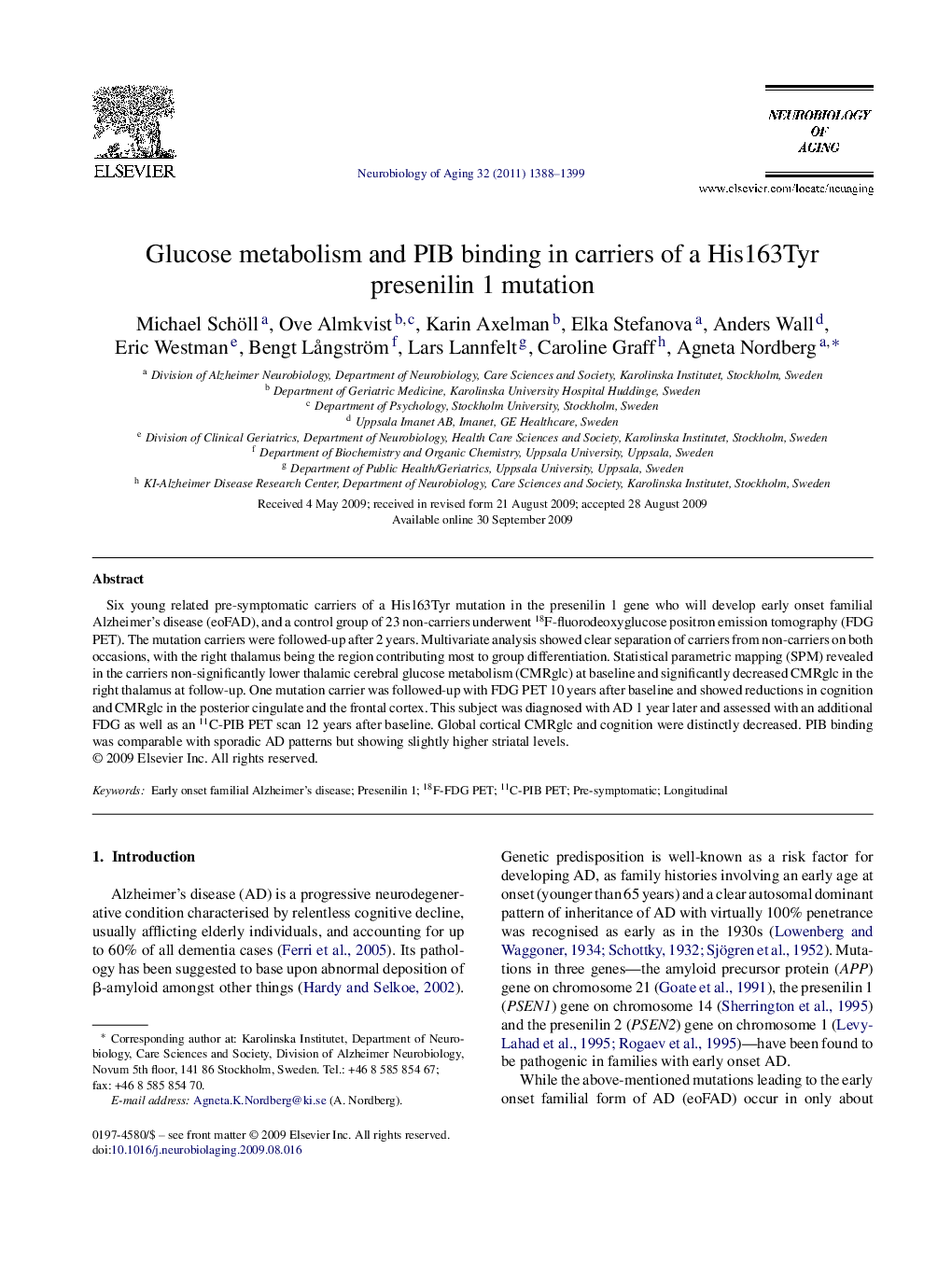| Article ID | Journal | Published Year | Pages | File Type |
|---|---|---|---|---|
| 330975 | Neurobiology of Aging | 2011 | 12 Pages |
Six young related pre-symptomatic carriers of a His163Tyr mutation in the presenilin 1 gene who will develop early onset familial Alzheimer's disease (eoFAD), and a control group of 23 non-carriers underwent 18F-fluorodeoxyglucose positron emission tomography (FDG PET). The mutation carriers were followed-up after 2 years. Multivariate analysis showed clear separation of carriers from non-carriers on both occasions, with the right thalamus being the region contributing most to group differentiation. Statistical parametric mapping (SPM) revealed in the carriers non-significantly lower thalamic cerebral glucose metabolism (CMRglc) at baseline and significantly decreased CMRglc in the right thalamus at follow-up. One mutation carrier was followed-up with FDG PET 10 years after baseline and showed reductions in cognition and CMRglc in the posterior cingulate and the frontal cortex. This subject was diagnosed with AD 1 year later and assessed with an additional FDG as well as an 11C-PIB PET scan 12 years after baseline. Global cortical CMRglc and cognition were distinctly decreased. PIB binding was comparable with sporadic AD patterns but showing slightly higher striatal levels.
